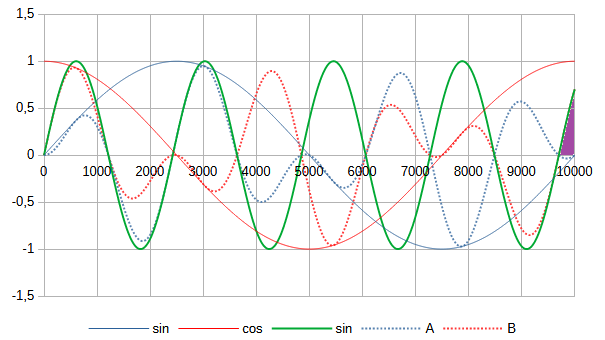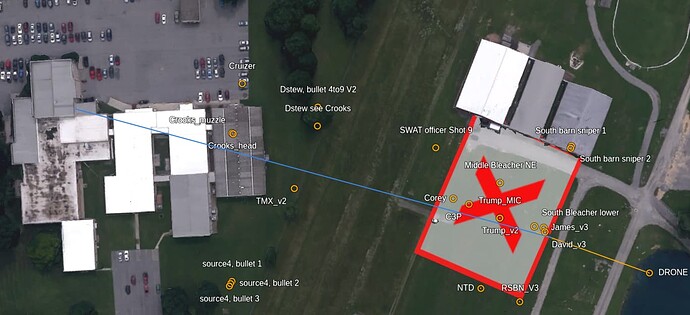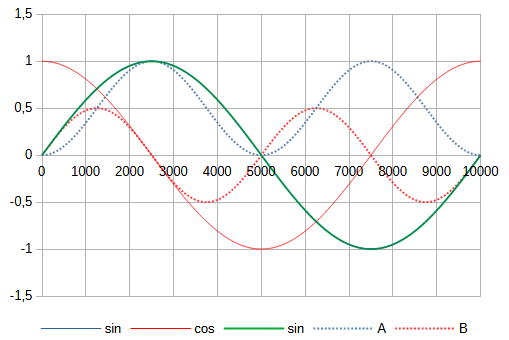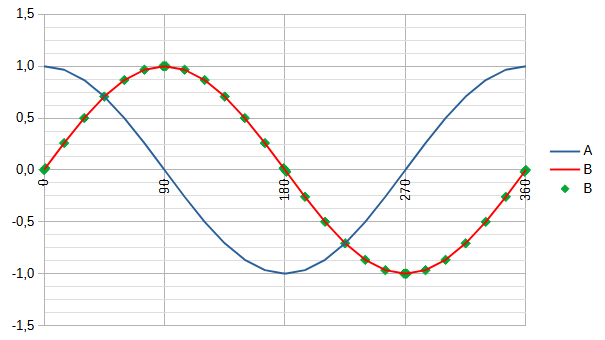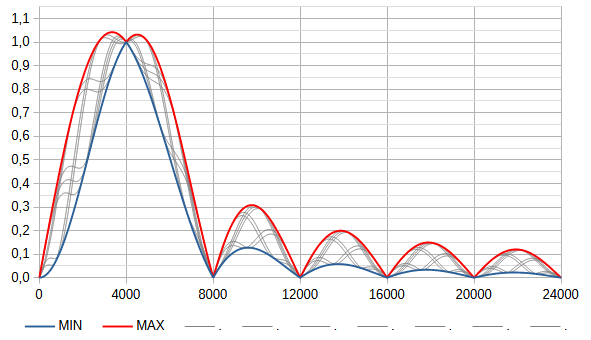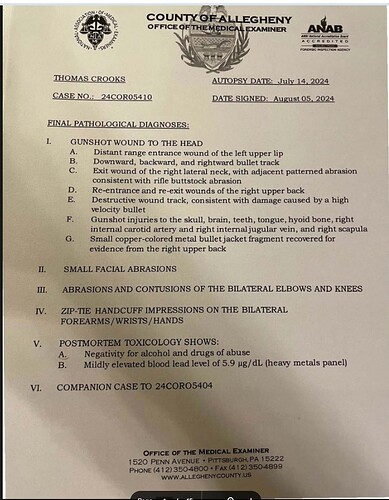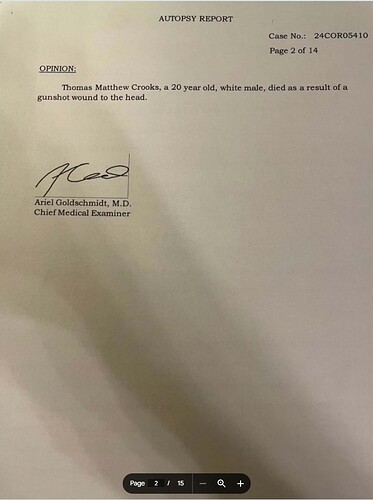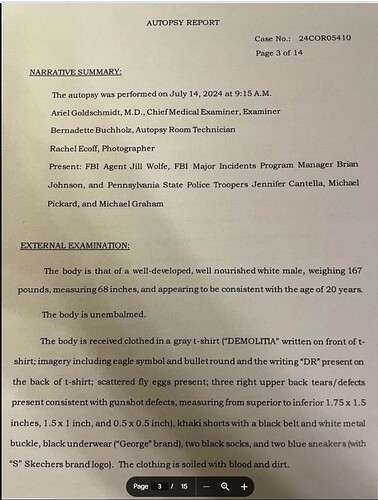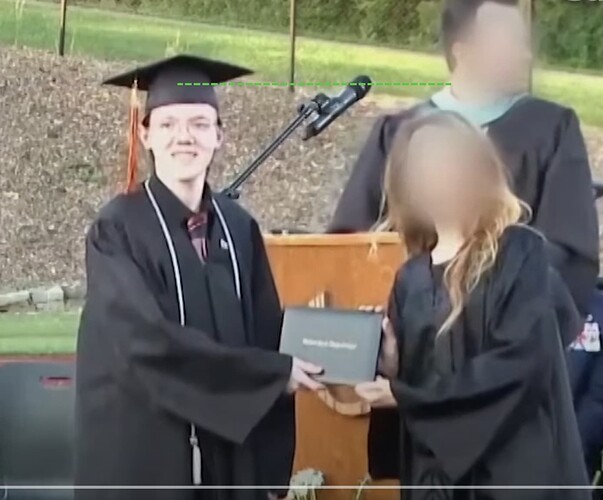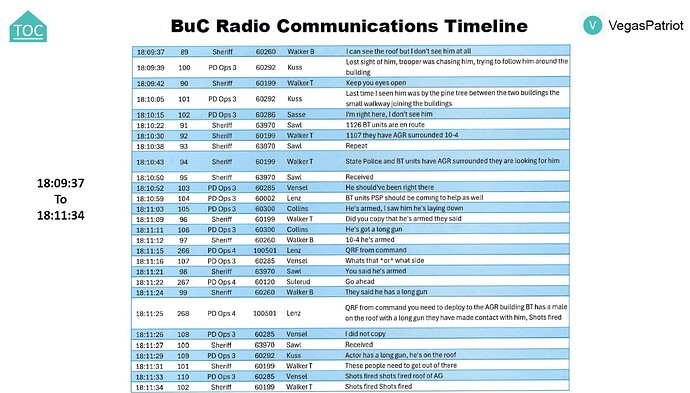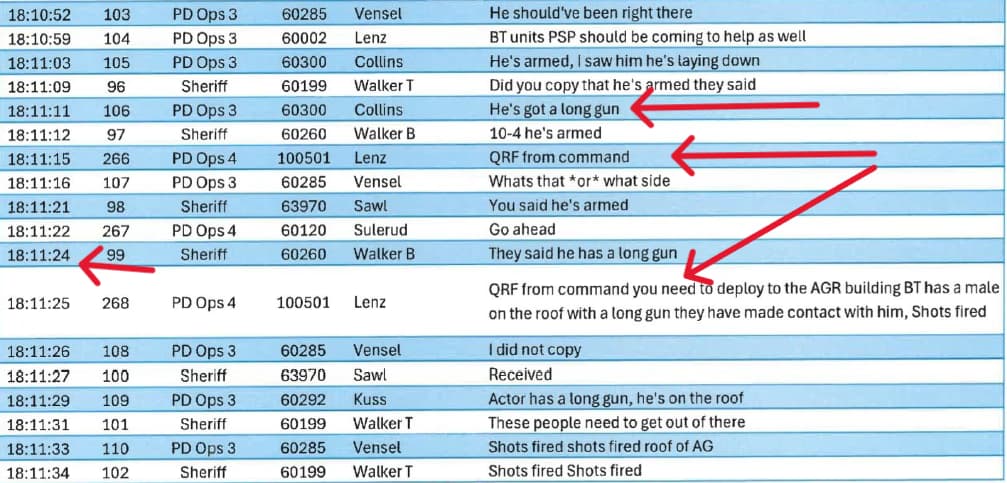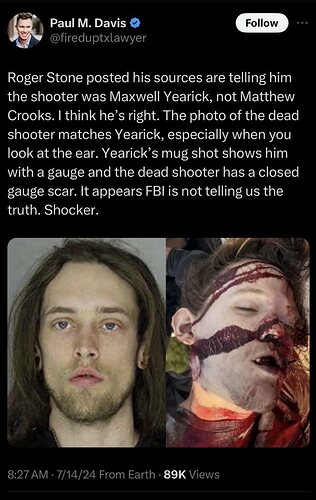There was important information in the transcript of the CAT Advance Agent, and I haven’t seen ANYONE else note it yet.
This is the counter assault team advance agent’s transcript, pages 42-43. This guy flew in to Pittsburgh with Trump but doesn’t appear to be part of Trump’s detail. Offstage announce is the tent that opens onto the catwalk that leads to the stage.
But he was WITH the Butler ESU asst commander during Trump’s rally, and so was a communications liaison, I didn’t know there was one outside of the local emergency operator.
https://www.hsgac.senate.gov/wp-content/uploads/CAT-Advance-Agent-Transcript_Redacted.pdf
Witness -
"So briefed [redacted] again, just to make sure they were clear on what was expected. We went to offstage announce. Once we were standing at offstage announce, we wasn’t there long. Hercules come over, or counter sniper. Our Secret Service counter sniper come over [channel] and said, “Something going on at the three o’clock. It looks like” – and this is not a quote because I don’t remember exactly what was said. But something going on at the three o’clock, and it looks like officers are dealing with a situation out there.
At that point, when I heard that on the radio, I looked over at my counterpart [Butler ESU assistant commander], and I asked him, “What’s going on at the three o’clock? Are you hearing anything on the radios?” And he was sitting there
listening for a few seconds, and then he come over – he came back to me and said, “Well, it sounds like there’s a QRF enroute there.” And then I said, “What’s going on? Is it a fight? Is it a protest?” And then that’s when the shot – we heard the shots, literally in seconds. And that’s when we responded. "
HSGAC Majority - “And then understanding that it’s hard to remember specific timing, after you heard over [channel] that something was going on a three o’clock, and you asked the local officer if he was hearing anything, roughly how much time had elapsed at that point?”
Witness - “Seconds.”
HSGAC Majority - "Seconds. And then between when you asked him and he – roughly how much time was he listening on the radio before he relayed to you –
Witness - “Seconds. I mean, it was quick. Like it all happened very quick.”
End quotes from transcript
You will all, of course, recognize that this timeline is BS. Officer Collins had run to the west side of the AGR building, then got boosted to the roof, confronted “Crooks” and dropped down with 38 seconds to go. He radioed to somebody within 10 seconds - so there should have been a good minute warning of “something happening at the 3 o’clock” and almost 30 seconds of a clear radio message of a guy on the roof with a rifle.
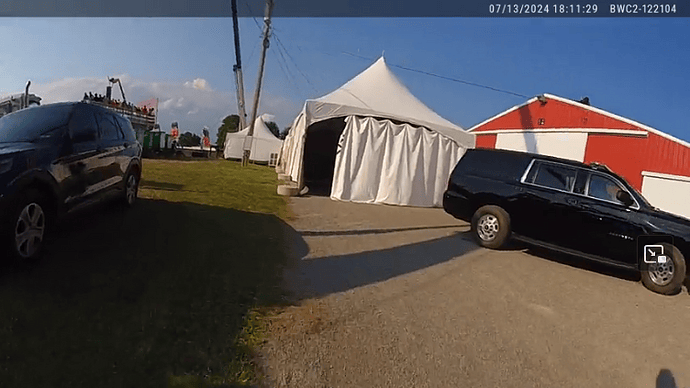
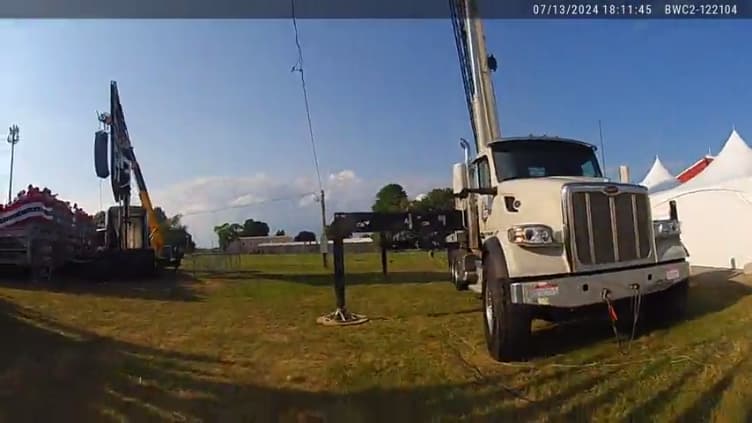
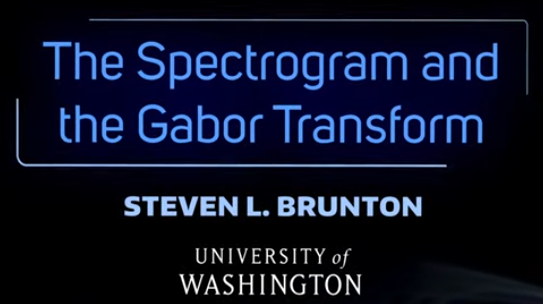
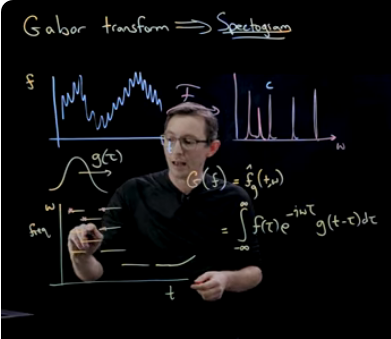

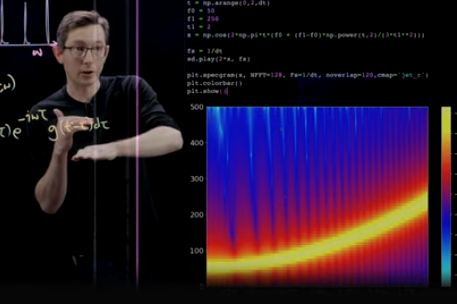
![Spectrogram Examples [Python]](https://img.youtube.com/vi/TJGlxdW7Fb4/maxresdefault.jpg)
